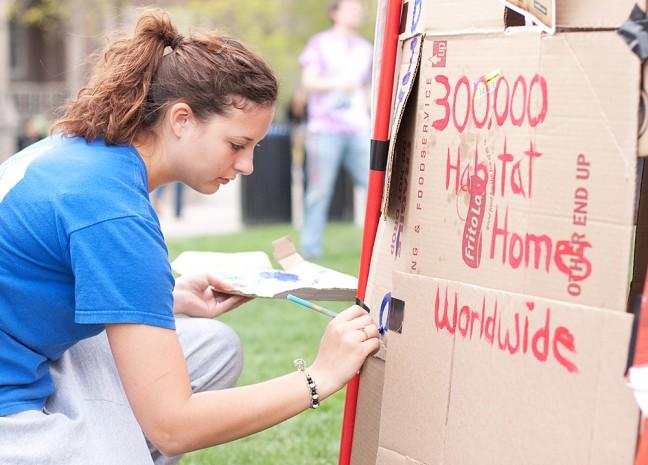Habitat for Humanity Dane County, in partnership with the National Ready Mixed Concrete Association’s “Build with Strength” coalition, met Thursday to announce a goal to build 50 homes in 50 states in five years using an energy efficient technique known as insulated concrete forms. The technique promotes sustainability in construction and helps bridge the housing gap in Dane County.
Over 60 community members attended the celebratory event at the site of the first sustainable home built by the coalition, where speakers from both organizations spoke about the project. The coalition has built 47 homes in 26 states since February 2021, according to a press release.
The event also included a “block signing ceremony,” where attendees could wish the future residents of the home well.
“There is a significant lack of affordable housing within Dane County,” Habitat for Humanity of Dane County CEO, Valerie Renk said in the press release. “In Dane County alone, one in eight people lives in poverty, including 16 percent of all Dane County children. Habitat for Humanity is proud to be a part of the effort to eliminate the affordable housing crisis in the county.”
One in eight of the United States population experiences poverty, and seven percent of households in Dane County are spending over 50% of their income on housing, the press release said. Further, Dane County is ranked second in Wisconsin in for underbuilding.
ICFs have been used in the construction of schools in an effort to attain net zero energy output, NRMCA Chief Communications Officer Gregg Lewis said. They are made from expanded polystyrene foam forming two panels to create a solid wall for Habitat for Humanity homes.
Constructing homes with this energy-efficient foam yields benefits for families, such as limiting sound from busy streets and saving money on utility bills, Lewis said.
“Construction is faster, safer and it’s like stacking Legos,” Lewis said. “Our crew is having a blast with it because it’s a different kind of work.”
Lewis said traditional building materials and land are difficult to source, making the sustainable and energy efficient construction done by NRMCA even more valuable to the communities it benefits.
The efficiency and success Build for Strength has seen from this sustainable approach indicates they will be able to expand from building 50 homes to 250 homes in 50 states within the next few years, Lewis said.
“When you’re supporting the concrete industry, you are supporting your community through locally owned businesses,” Lewis said.


